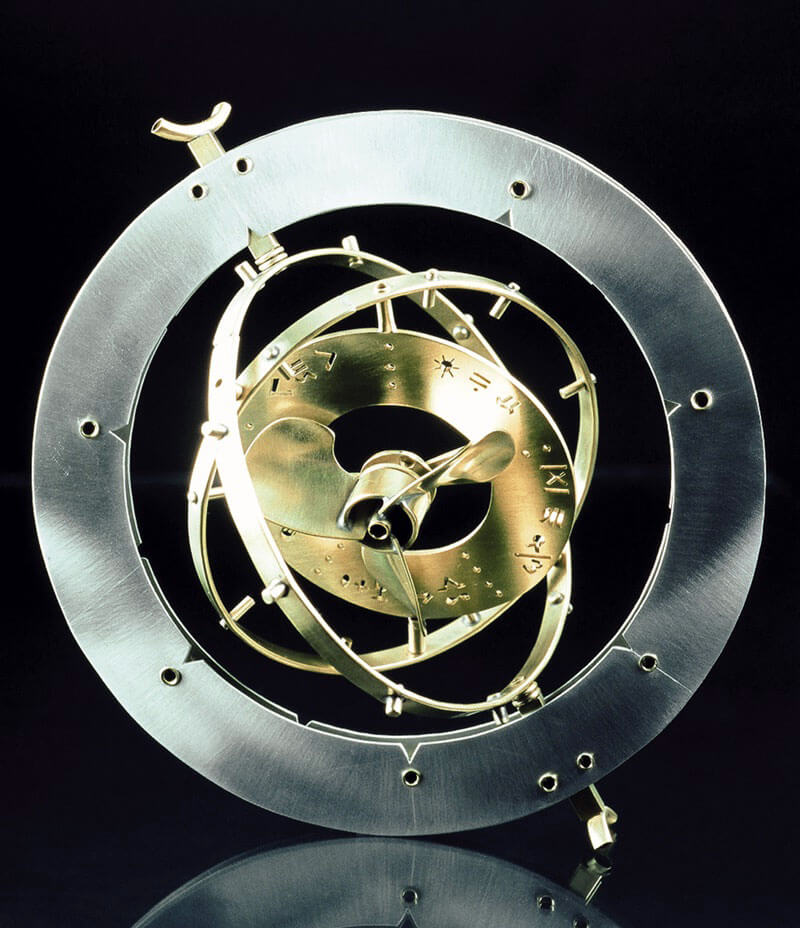
Specious ~ 1.superficially plausible but actually wrong, 2. misleadingly attractive in appearance. f. Latin - specere: look. [appearance, kind, beauty]. As in: specimen, species, specific, spectacle, speculation, etc.
Some notes from the Specious Voyages –
Sometime in the late 20th century I embarked upon this voyage, departing the home shores for new territories, ever hopeful of encountering the strange, the extra-ordinary.
Any voyage out is also, curiously, a voyage inwards as well. There are facts and experiences to be digested and assimilated as we circumnavigate the heart of the matter.
Here is p resented evidence from the most recent voyages to t hat mysterious and vast continent
Terra Recognita. This collection of fabulations, a museologica l tableau, is arranged for your
edification and divertissement…
THE SPECIOUS VOYAGES
The narrative of the journey is re-constructed with maps of the territories crossed, and the instrumentation used for navigation and measurement of data. Of the many anomalous species collected, I have been able to reconstitute some in the laboratory and represent them in artificial reconstructions of their natural environment.
This treatise is made possible through a noble tradition in the realm of field studies, which stretches back to the 19th century, when rigid distinctions between professional and amateur did not apply. The value of such field research may not be apparent to those more inclined to follow the pre-scribed rules, those who may be a little afraid of wild facts and untamed speculation.
However even while assuming a modern and anti-discriminating position we are nonetheless still honouring past methodologies and specifically Humboldt’s [dictum]:
“in considering the study of physical phenomena…in its general influence on the intellectual advancement of mankind…its most important result [is] knowledge of the chain of connection.”
(Alexander Von Humboldt, Kosmos, 1845. Quoted in The Fontana History of the Environmental Sciences by Peter J. Bowler.)
THE INSTRUMENTS
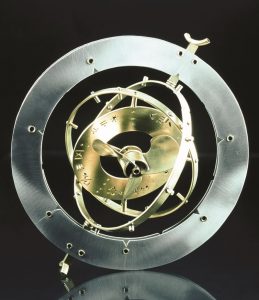
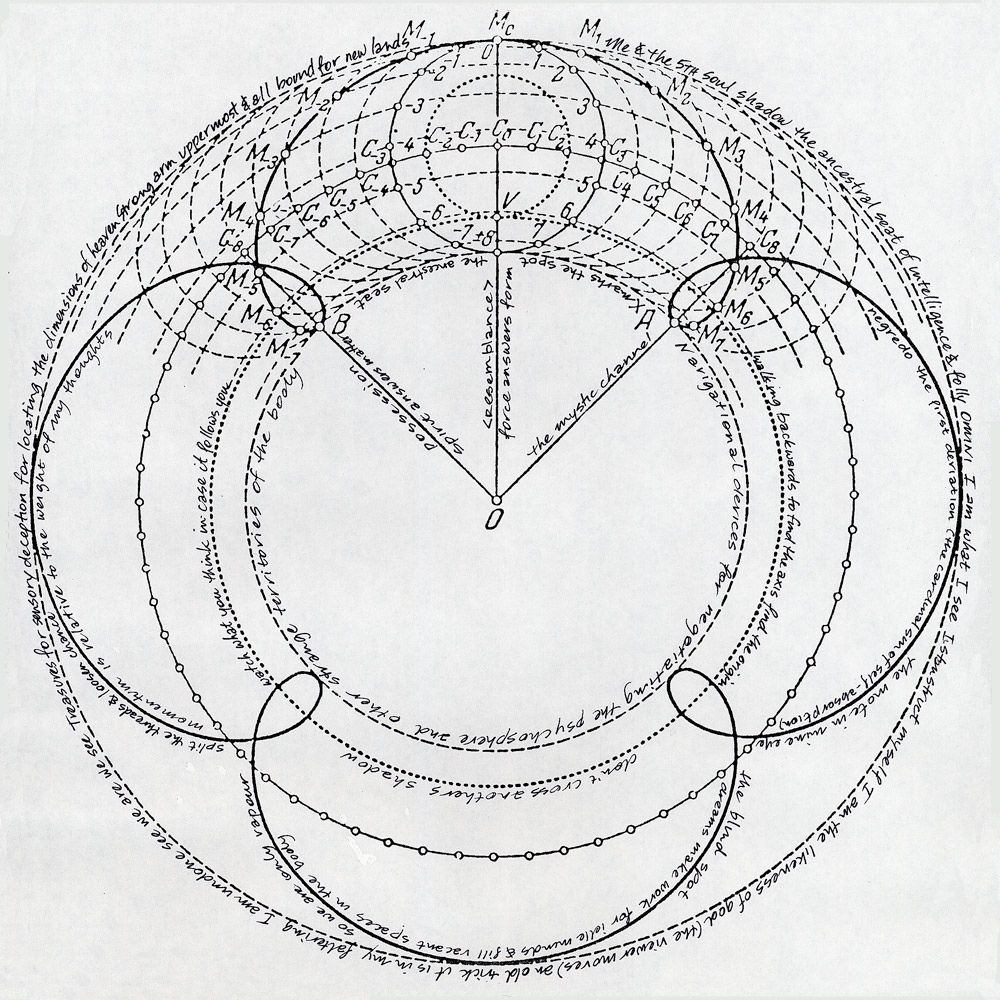
Astromancer
A late 20th century instrument for navigating the psychosphere.
Used on the early voyages, this particular device was designed for detecting variations in the astral bodies. The calibrations made in accordance with atmospheric variations were used for determining the relative position of the traveller.
The accompanying diagram is one example of the data maps produced using the Astromancer.
The Reception Ring
The Reception Ring is a radio-energetic device that can be tuned to receive specific types of radiation emanating from the environment, enabling the user to detect variations in the energetic field of any object in the immediate vicinity.
This information can be utilised to locate empathetic fields. A most useful device due to its portability.
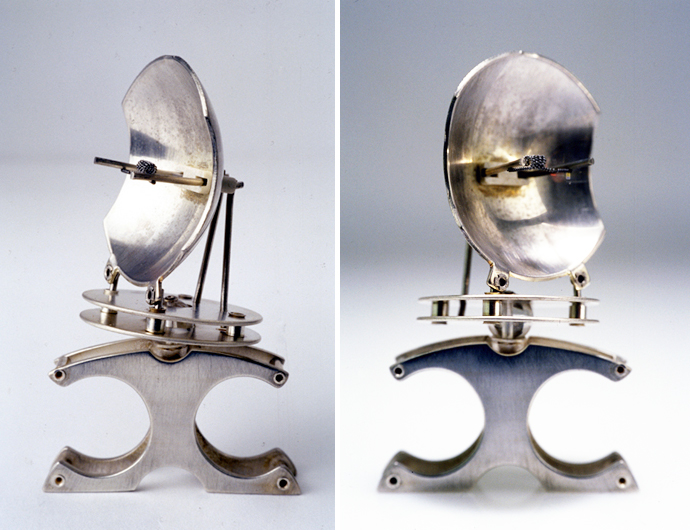
About the Instruments of Measurement
In our preparations for these voyages we took great care to select the appropriate equipment required for the journey.
These consisted of certain instruments for navigation, maps that [somewhat loosely] plotted the course, and other instruments for measuring and determining the qualities of the environments that we would find ourselves in, expectedly or otherwise.
As for the use and operation of those instruments of navigation such as are necessary to proceed, the first lesson of relativity that we learned on these voyages was never to be so specific as to the destination so that we seek only that for which we are looking and thus curtail our possibilities. Diversions encountered along the way may be overlooked if we are concentrated too fully on the object of the journey, and yet these diversions, as potential destinations, could yield the very overarching links that we seek.
Both for reasons of navigation, and for the collection of data on arrival in any locale, a variety of devices are used to determine one’s situation in space and time. Of course it is not always necessary or even pragmatic to determine an absolute position, and I am much in favour of working on proportional and relative positioning, for the very simple reason that our situation is constantly changing. One delusion we explorers have courted with our measuring devices is the need to work from the assumption of a fixed point or position. I have observed how we struggle to determine absolutes when we are far better to be prepared for states of flux. Our instrumentation must therefore be construed for detecting the flows of any perceivable energy within our field of experience.
Thus it becomes important to be able to measure the energy emanating from the physical and psychical bodies of any location, and of oneself in that locale.
(Extracted from The Origin of Specious – a pictorial and written account of the voyages to the New Hybridies.)
"One must be wary of a delusion constantly at play within most measuring paradigms – that of seeing oneself as separate to the locale.
Immediately we arrive in any place, whether familiar or not, our bodies begin a subtle process of re-arrangement at a molecular level.
We shape-shift, one might say, in a continual process of adaptation."
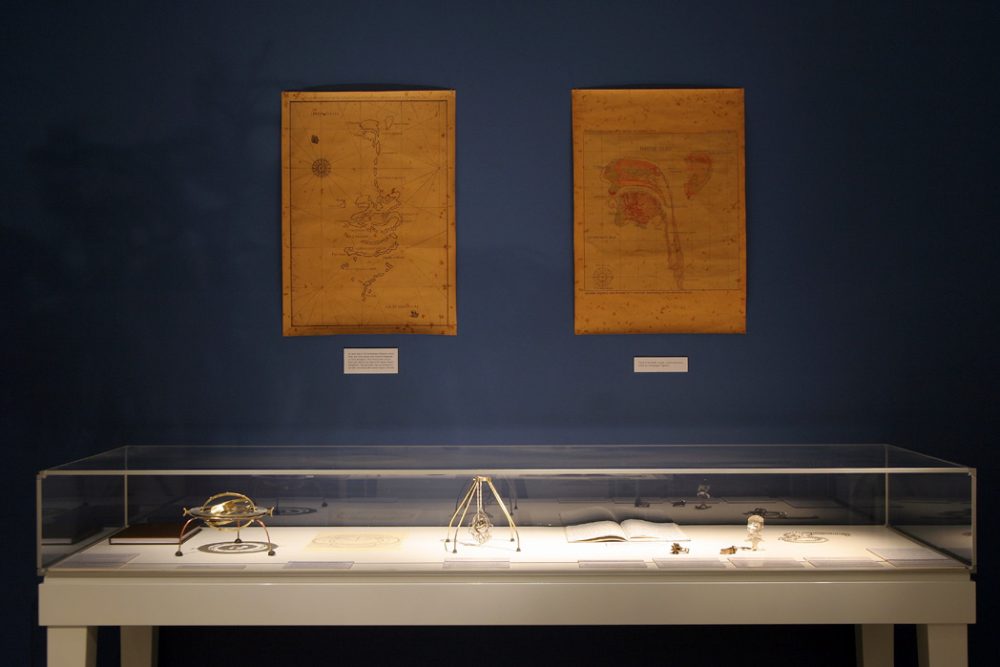
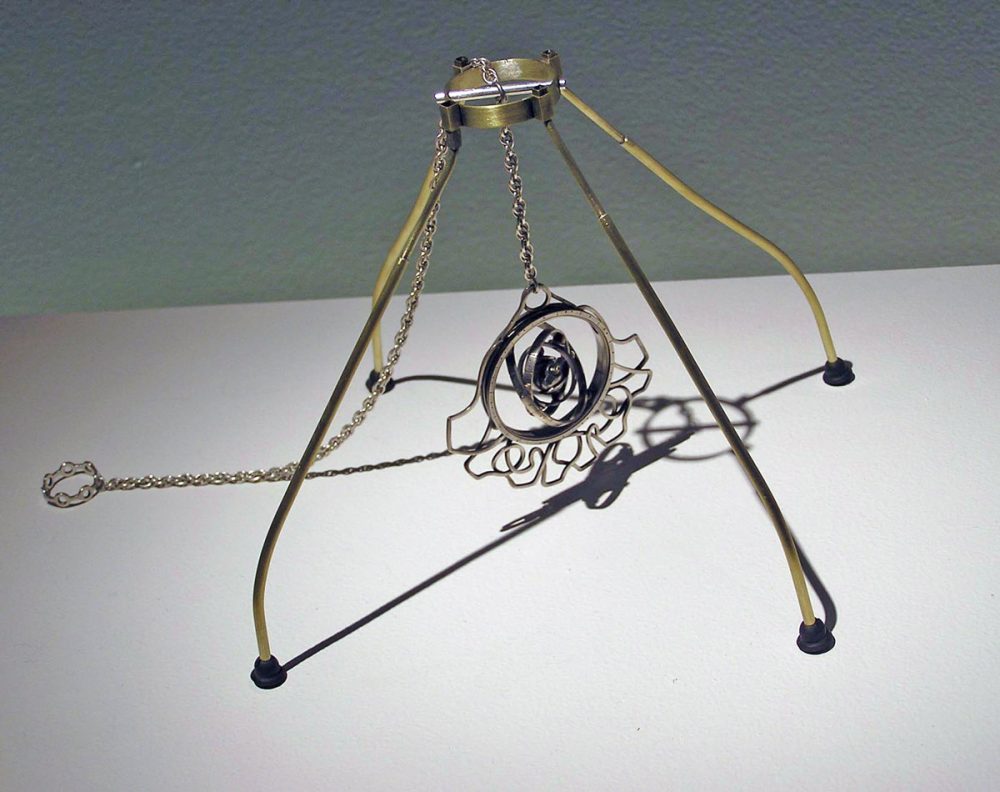
The Geomancer was designed as an aid to mapping the geo-energy fields of any locale. The maps produced are particularly useful on arrival in any new location, providing directions for aligning the geomagnetic energies of the physical body thus enabling the user to adapt quickly to subtle differences within the new environment that might be detrimental to a newcomer’s physiognomy if undetected.
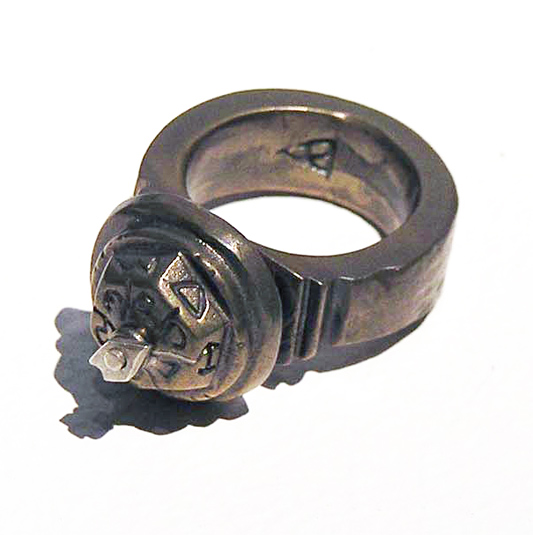
Original Forecasting ring circa 1989.
Note the primitive engraving and the simple single spinning arrow. This early instrument was used in initial decision-making processes with respect to certain considerations for the voyage.
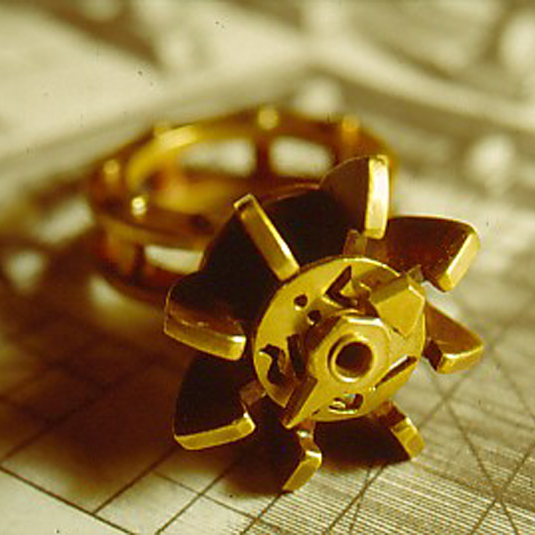
Turbine Forecasting ring.
A development and refining of the original forecaster led to this more sophisticated wind powered model with a double level prediction tabulation. The disc marked with the divining symbols turns independently of the arrow increasing the predictive capability. A most effective device for finding out which way the wind’s blowing.
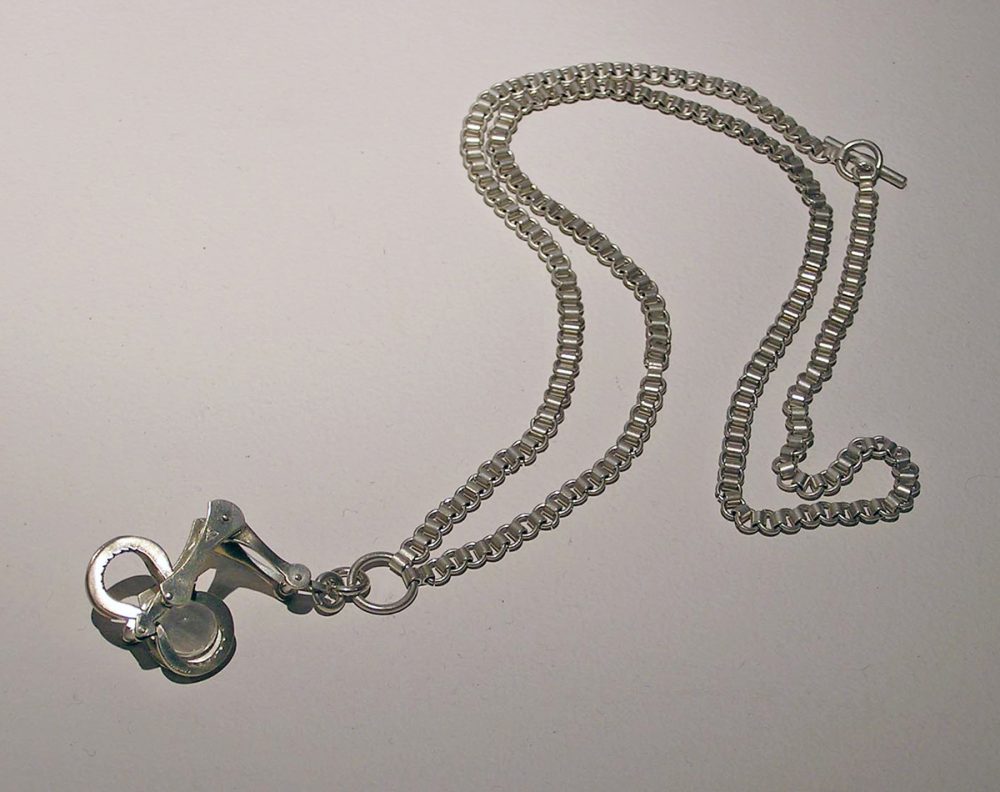
The hand-held Theodolite is based on ancient theurgical instruments that were used for detecting the presence of particular divinities inhabiting the physical body [a process known as en-theos]. The theodolite in this more secular age is now mostly used as a meditative device for calming the mind and clearing obstructive thoughts, which may impede the rational processes.
THE SPECIES
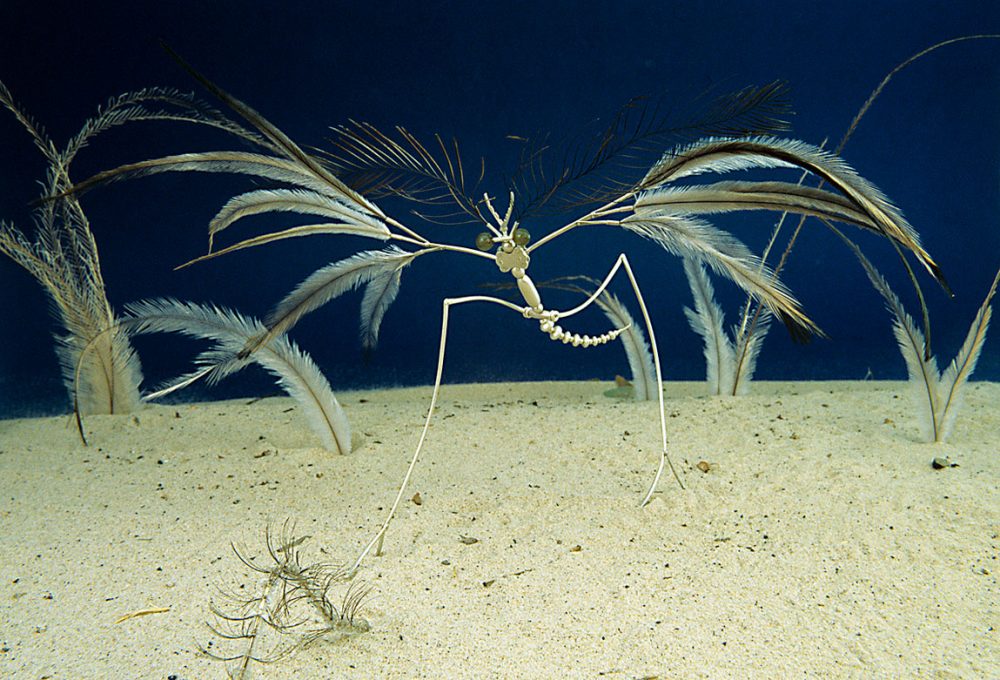
The Camouflage Moth pursues a Soft Worm
Can you spot the Camouflage moth (voraxa ambulara)? A descendant of the Pterodactyl, the moth shares this ancestry with the Fancy Flying Tickler but has evolved as a ground creature and is actually unable to fly.
It uses its wings instead as camouflage within the dry desert environment.
The moth has a keen appetite and its favourite food is the Soft Worm (vermis vulnerablis), which lives in the desert sand. Here it stalks the prey using the emu grass as cover. The cavorting worm is oblivious of its approach.
Orange Claw Escalopis (as yet unclassified)
“This curious creature was discovered basking on a rock in the lagoon. Presuming it to be enjoying a postprandial nap we seized the advantage of its soporific state to snaffle the unsuspecting beast with our nets (being unsure how rough its scaly armour might be). It made excellent eating. And later we were able to put its pelt to good use in a variety of fashionable decoration.
Its lurid colouring indicated that the creature need make no attempt to disguise itself and thus we surmise it had no natural predators in its immediate environment.
On the contrary it’s likely the primary objective of such a pretty coat is to attract a mate. How ironic that this very attribute which has been designed to perpetuate the animal’s genetic lineage is the same quality that brings about its demise since the attractive pelt makes a lovely wearable artefact much prized by the natives.”
Extracted from journal notes of “The Voyages to the New Hybridies.”
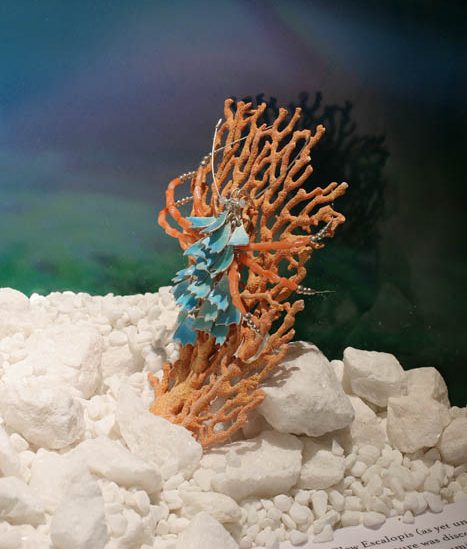
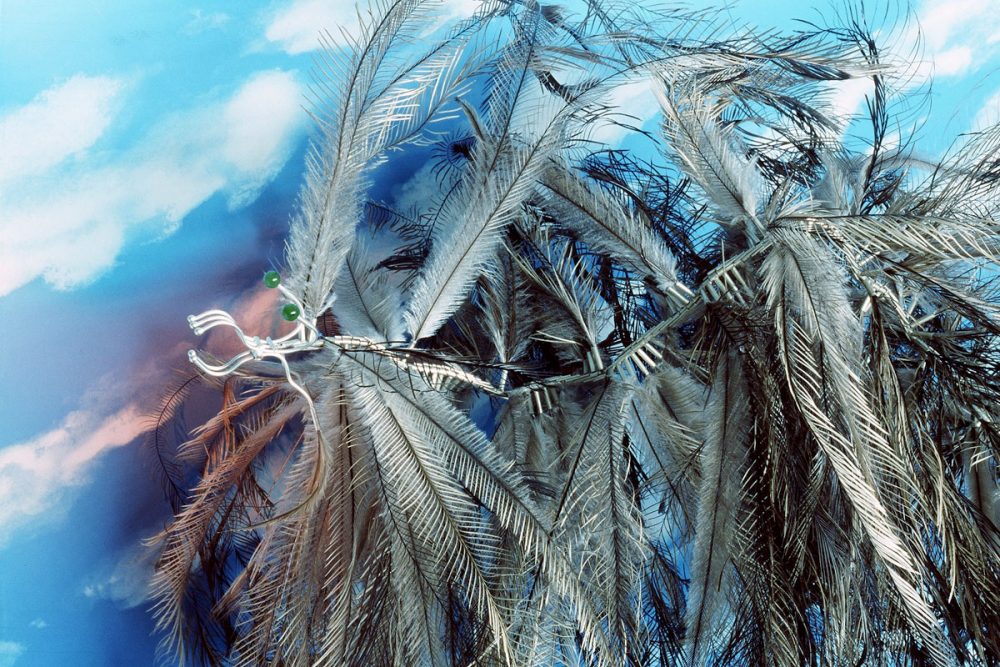
Above: Fancy Flying Tickler (Avolare draconum) This large flying viper is a direct descendant of the Chinese dragon, which most likely evolved from the Pterodactyl. Phylum: Vertebrae; Class: Reptilia; Order: Basilicus
Below: sketches of creatures and collected remnants
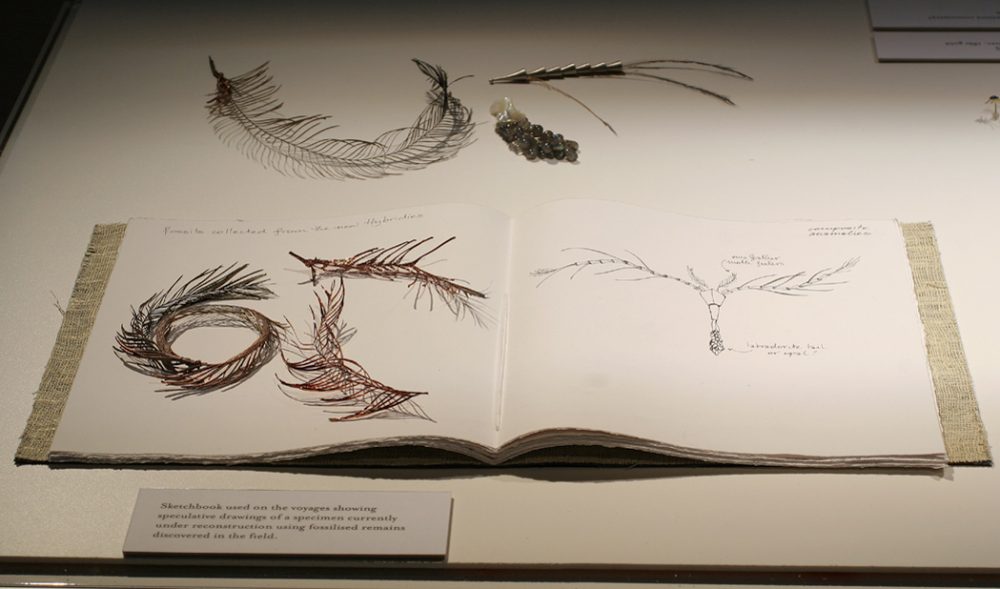
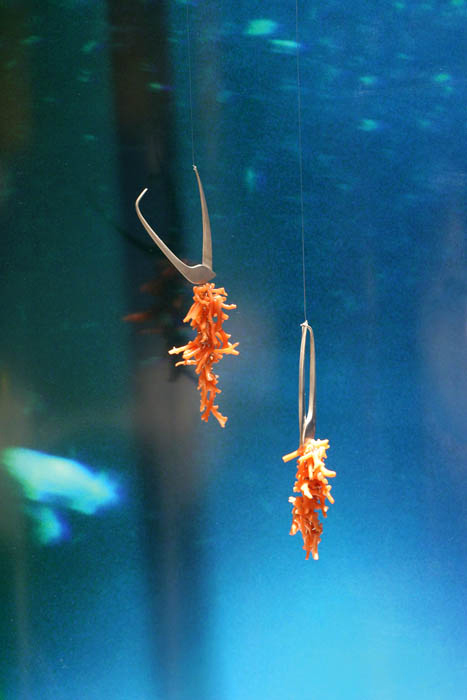
Mandibulae (Coralatus Conjunctae)
We were fortunate to collect a mating pair of this rare and beautiful amphibious specimen, and are hopeful for them to reproduce in captivity. The mandibulae mate for life and unless one is irrevocably lost they will always travel together.
Phylum: Athropoda; Class: crustacea; Order: hydrophiidae
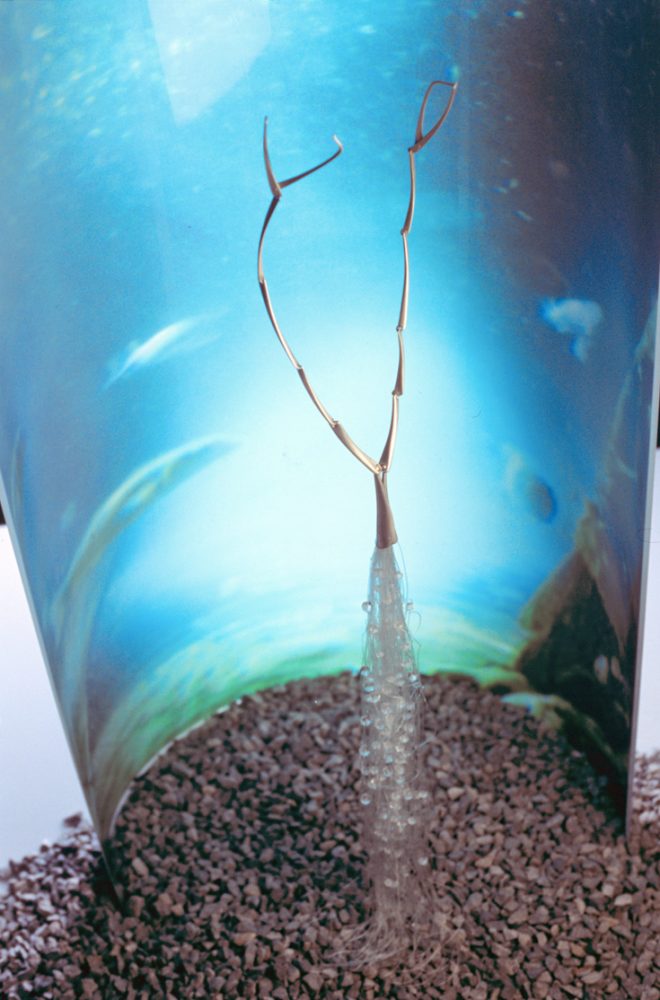
Jellytailed Crawfish (Embracchia Delicisiosa)
In contrast to the hard shell protecting its essential organs the Crawfish’s tail appears soft and exposed. However this is belied by its highly poisonous sting. The soft tail affords the creature greater manoeuvrability in the water while also protecting it from prowling sharks that would find it a very distasteful meal.
Phylum: Athropoda; Class: crustacea; Order: hydrophiidae
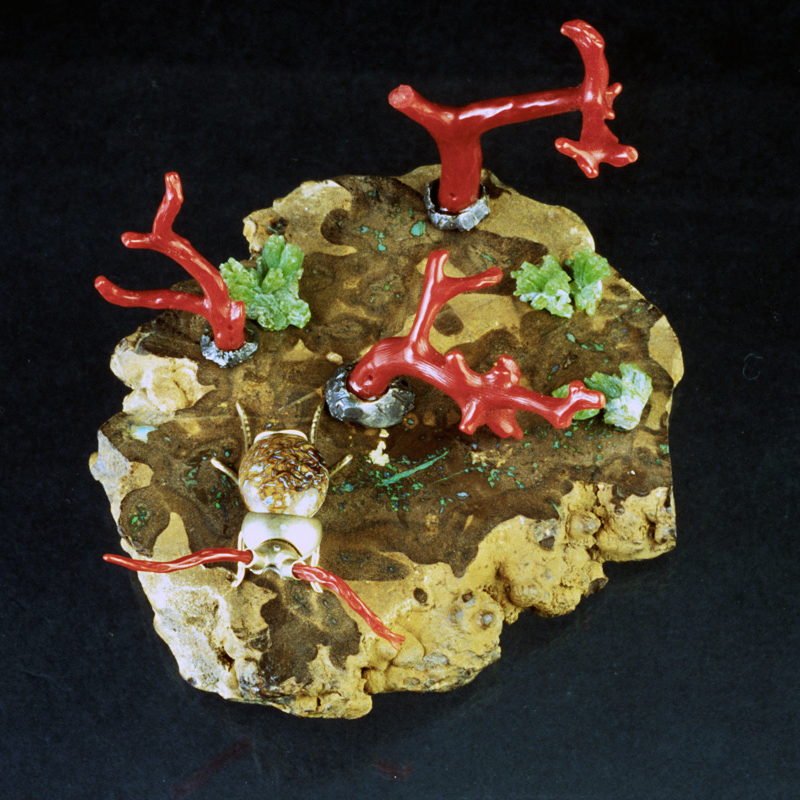
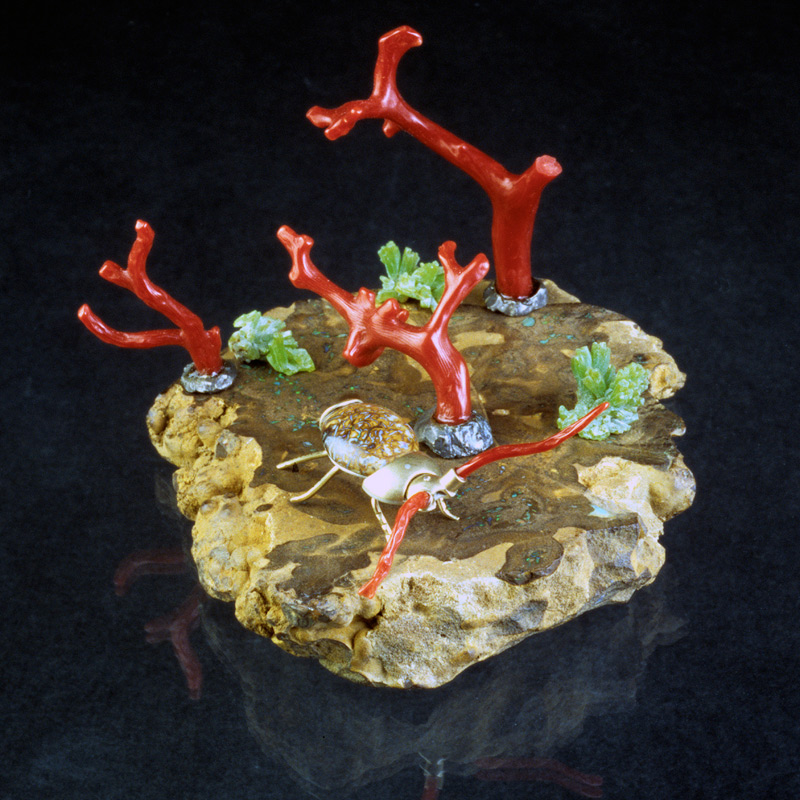
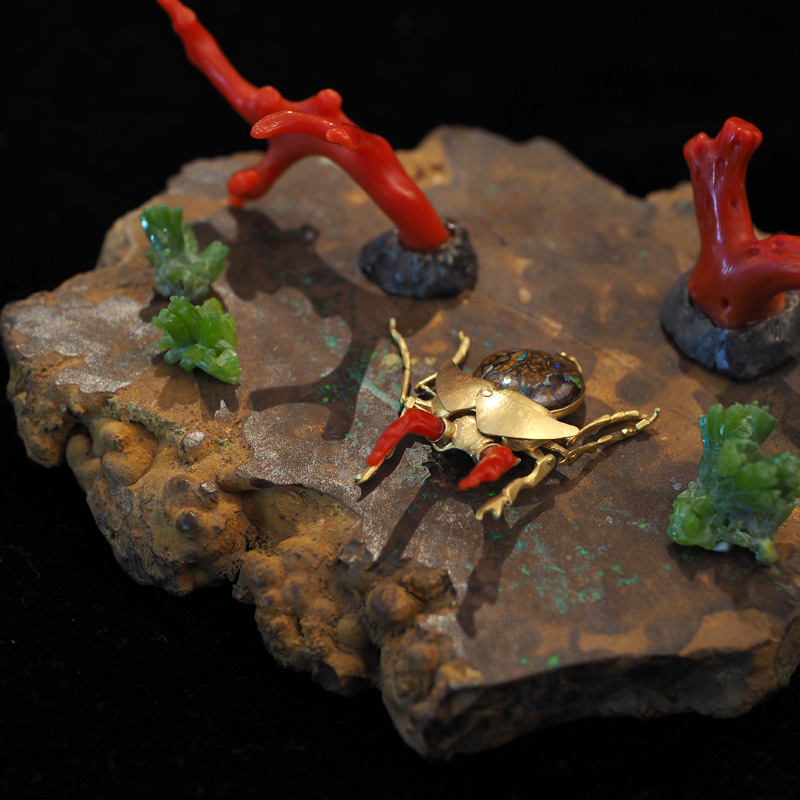
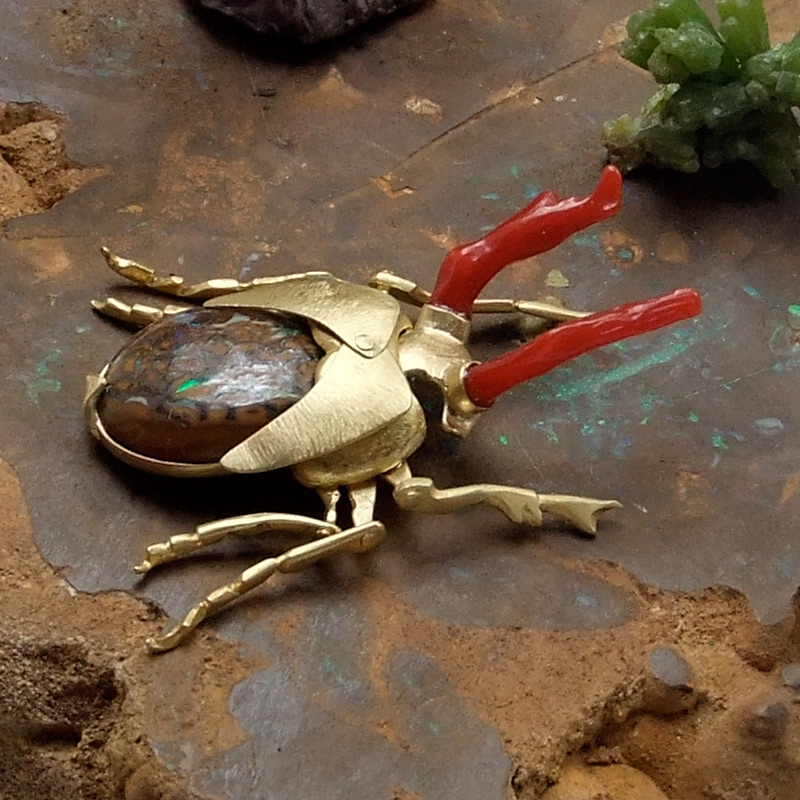
Above: The Boulder Beetle (Terracita similis) another member of the order Roccaptera, assumes in every way the characteristics of its environment. The solid outer shell makes it is completely inedible therefore its camouflage has not evolved as protection from predators. It scrounges its nutrition from the hard rock on which it lives and its asexual characteristics mean that it has no need to attract a mate. Therefore it would appear that its apparent embellishments do not stem from active adaptation in order to meet needs, instead they seem instead to be a blending of inertia.
In light of other anomalies which have caused me to reconsider my understanding of nature’s intent in these isolated territories, this behaviour might suggest a curious balance between creature and surroundings where both are in such complete co-operation that there is a kind of osmosis, an infantile state where the creature’s needs are so completely met by its environment that no necessity exists to propel it toward any form of differentiation.
Phylum: Arthropoda; class: Insecta; order: Roccaptera; Family: Nemopresapia.

An endangered species, this elegant Feathered Dandyfly (Avicula phantasis) realises what has been happening to his disappearing cousins when he chances across the nest of a Wagala. The main predator of these dramatic insects, the Wagala, after consuming their flesh, uses their distinctive wings to feather her nest.
Phylum: Arthropoda; Class: Insecta; Order: Lepidoptera; Family: Somniumi
The Specious Voyages was shown at the Jam Factory, Adelaide and the Museum of Brisbane in 2005-2006
This project has been assisted by the Australian Government through the Australia Council, its arts funding and advisory body.
See the next stage of the Voyages: The Evolution of Specious
